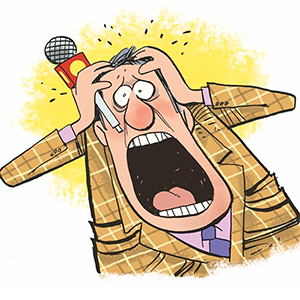My Pet World: It's important to get older cats tested for kidney disease
Q: My vet said that soon my 8 year-old cat should be tested for kidney disease. Still, Lucky, appears to be just fine, eats well, and as you know cats today live 'till they're even 20. So, why do the testing? -- B. J., Montclair, NJ
A: You do the testing for two reasons. First, because you can. A new test for Chronic Kidney Disease called Symmetric dimethylarginine or SDMA is now offered by many veterinarians with a routine blood panel.
Also, early intervention is huge. Dr. Kate Pietsch of Dartmouth, Mass., said that by the time most cat owners observe symptoms, about 75 percent of kidney function is lost, which is why there are symptoms. Those cats aren't feeling well.
"The new test is far more sensitive," Pietsch said. "So we can intervene while there's 40 percent loss of kidney function. A cat can live a completely normal life with about 50 percent kidney function."
However, at this juncture, there are hardly ever symptoms -- so the only way to know is to test. Pietsch said, "We're discovering loss of kidney function (determined by SDMA) in lots middle aged cats before the cat becomes sick. This is extremely important to potentially slow the disease progression and help us to monitor kidney loss."
----
Q: How do you slow the disease progression of kidney disease in cats? My cat gets fluids in her back/neck three times a week. She feels great now, but the treatment is not pleasant. It seems she actually has borderline kidney problems, but she can't eat or function without fluids. Do you have additional ideas for treatment? -- A.M., Plantation, FL
A: "Most cats (with diagnosed Chronic Kidney Disease)t need fluids with or without dietary or other changes to reduce their serum phosphorus level," said feline veterinarian Dr. Margie Scherk, of Vancouver, British Columbia. "Fluids are very helpful and, in most cases, are most beneficial if given every day. The goal is not to reverse dehydration, but rather, to prevent it from ever occurring by keeping a cat well hydrated at all times. You can tell that a cat is well hydrated by looking at their stool. A moist, formed log is a sign of healthy hydration."
Scherk, who is the editor of Feline Medicine and Surgery suggests this tip: Fluid should be given at the cat's body temperature, and the experience won't be as uncomfortable.
Scherk adds that the bad news is that there is no cure for kidney disease in cats. However, early diagnosis is helpful. And no matter, the goal is to maintain, or enhance quality of life, and even extend lifespan. So, with early detection, appropriate intervention and a little luck -- cats with kidney disease may die of a very ripe old age of an unrelated illness.
...continued
(c) 2015 DISTRIBUTED BY TRIBUNE MEDIA SERVICES, INC.






